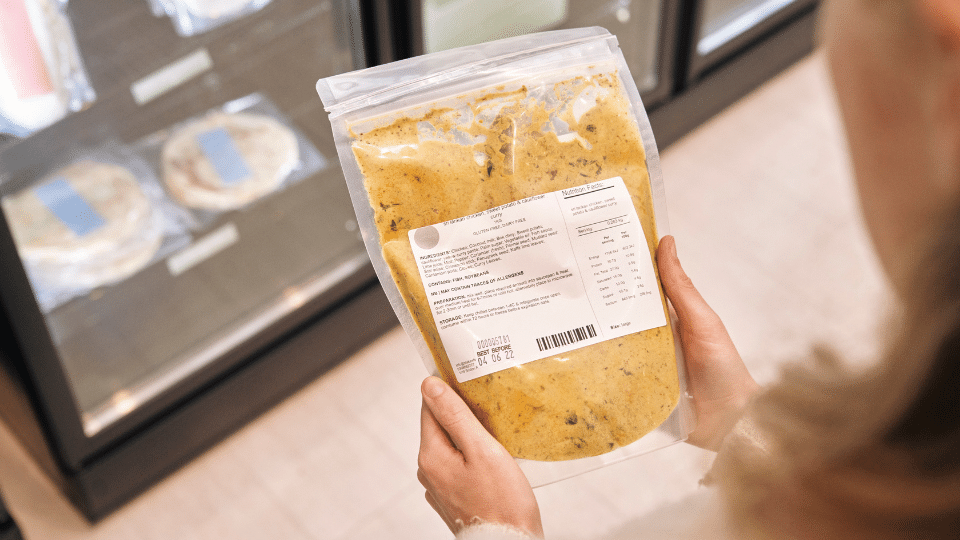How thermal printers can streamline your food label printing needs
Best Practice for Labelling your Meals
Labels are an extremely important part of your business and Cookaborough makes it very easy to label your meals with all ingredients, associated allergens and even a nutrition panel. As well as being best practice, your customers will appreciate relevant Ingredient information clearly displayed on the packaging or the container it arrives in, as well as other information such as Preparation Notes, Serving Suggestions and Use or Freeze by dates.
Automatically generated whenever you enter a Recipe, the Cookaborough Labels feature ensures that your labels are as accurate as your Recipes are, and that the display complies with the new Plain English Allergen Labelling guidelines.
Why Choose Thermal Printers for Label Printing?
Thermal printers have become an increasingly popular choice for businesses that require efficient and reliable label printing solutions such as those using Cookaborough. Key benefits include:
-
-
Less waste: Unlike traditional A4 format printers, which can result in having to print more than you need due to multiple labels per page, thermal printers offer a streamlined process that prints each label individually. This makes them particularly suitable for businesses with weekly changes to dishes on the menu. Since you only print the labels you need, there is no excess paper or ink wasted on unused labels. This not only helps in cutting down costs but also supports sustainable business practices.
-
Flexibility: thermal printers are designed to handle a variety of label sizes and types, making them versatile for different labelling needs. A thermal printer can typically adapt to your specific requirements more than a traditional printer.
-
Speed: thermal printers offer high-speed printing capabilities, which is invaluable in fast-paced environments. The ability to print labels on demand means that you can respond quickly to changes in inventory or shipping requirements.
-
Durable: durability of thermal printed labels, which are often resistant to smudging and fading, ensures that your labels remain legible and professional-looking over time.
- Sustainability: Thermal printers operate using heat to transfer ink from a ribbon onto the label material or by using heat-sensitive paper that darkens when heated. This method eliminates the need for ink cartridges or toner. If you then use a sustainable label this method can result in little to no waste compared to ink-based printers.
-
Choosing the Right Thermal Printer for Your Business Needs
Zebra Technologies, Dymo, Brother, Ausprint and Hero are common manufacturers of thermal label, barcode, ticket, and receipt printers.
These brands, among many others, have ranges of thermal printers for Industrial, Desktop, and Mobile. The printers most suited to the food businesses operating on Cookaborough are the desktop range, which include both Direct Thermal and Thermal Transfer printing options.
- Direct Thermal printing is a digital printing process which produces a printed image by passing paper with a thermochromic coating, commonly known as thermal paper, over a print head consisting of tiny electrically heated elements. The coating turns black in the areas where it is heated, producing an image.
Direct thermal printers have no ink, toner, or ribbon. The adhesion quality is determined by the quality of the label not the printer, and printed details on the label can be affected by heat, lights, and abrasive surfaces.
- Thermal Transfer printing is a different method, using plain paper with a heat-sensitive ribbon instead of heat-sensitive paper, but using similar print heads. The thin ribbon roll is heated by the printhead and melts onto the label to form the image. The melted ribbon or ink is absorbed so that the image becomes part of the paper.
Most thermal printers are monochrome (black and white) although some two-colour designs exist.
There are many different options for desktop thermal printers which offer a balance between cost and functionality. It's also essential to consider the software compatibility and connectivity options, ensuring that the printer integrates seamlessly with your existing systems. See below for some suggestions that are being successfully used by our customers.






